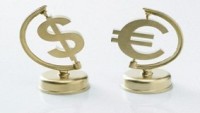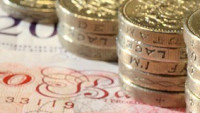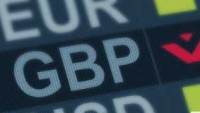USD
It was a surprise overshoot for US growth that was front and centre for markets on Thursday, with Q2 GDP figures showing that the economy expanded by 2.8% QoQ annualised in the second quarter. Granted, markets had expected to see a pickup after a 1.4% QoQ annualised growth in Q1. Nonetheless, yesterday’s figures beat pre-release projections for 2.0% growth by some distance, fuelled by better-than-expected consumer spending, inventories, and business investment. Accompanied by 2.9% core PCE growth, this rules out any chances of a Fed rate cut next week. That said, we also think it keeps a September cut on the table, with plenty of time for further disinflation to tip the balance for FOMC voters. Even so, we would caution against too much optimism, despite these latest activity figures suggesting that the US growth remains exceptional.
The details of yesterday’s report also point to growth at this pace being increasingly unsustainable. In particular, the personal savings rate remains well below pre-pandemic averages, a key factor propping up the 2.3% growth in personal consumption seen yesterday. A pullback in household spending looks likely to us, which should see growth looking much less spectacular later this year, with growing odds that a hard stop in consumer activity triggers a very sharp deceleration in the US economy, and with it, recession fears. All told then, we think this leaves the path lower for the greenback looking narrow through H2, exemplified by yesterday’s price action which saw a modest rally in the broad dollar on further signs of exceptionalism. And while our base case sees the dollar softening progressively as the US economy cools to a soft landing, the left-hand side of the dollar smile looks open to us too, offering multiple channels of support for the greenback in the medium term, suggesting that any dollar decline is likely to be slow and bumpy.
EUR
With the US economy in focus, the euro was a sideshow yesterday. Ultimately, this left the single currency to climb fractionally higher versus the dollar, helped at the margin by some non-committal ECB commentary. Today, ECB inflation expectations are similarly unlikely to offer much impetus for the euro, an outcome that should see EURSUD tracking side-ways into the weekend – something that we think could become a theme in the coming weeks, with a quiet August likely in store for the single currency.
GBP
It was a slow grind lower for the pound yesterday, with traders pulling back on bullish sterling bets as next week’s BoE meeting draws closer. As we see it, the MPC faces a tough challenge, with market expectations finely balanced between holding and hiking, with good arguments in favour of both. We lean toward a hold on this occasion considering recent comments from Chief Economist Huw Pill, which we felt skewed dovish at the margin. But cooler details across recent data releases also make a compelling argument to cut rates too in our eyes. All told, this leaves risks for the pound two-sided and elevated heading into next week, especially given that the announcement on Bank Rate is sandwiched between an FOMC rate decision and US nonfarm payrolls. We see a credible range of outcomes for GBPUSD between 1.275 and 1.30 next week – though given our call for the MPC, we lean towards the upper end of this set of outcomes.
CAD
The loonie continued to track lower against the dollar on Thursday, in line with our call for the pair. All told, we think current valuations better reflect Canadian fundamentals, having spent some time noting that the loonie should be weaker given a backdrop of weak growth, slowing inflation, and a labour market beginning to unwind. Even so, we think USDCAD could well climb higher in the short term too, though likely not on a sustainable basis. The BoC has left the door open to cutting at every meeting this year – and we think they will walk through it in September, meaning three rate cuts in Canada before the FOMC even delivers their first. If realised this could well see USDCAD heading towards 1.40 temporarily at the back end of Q3, before the stimulative effects of rate cuts domestically and a broader risk-on move as the Fed starts to ease sees USDCAD retrace lower into year-end.













